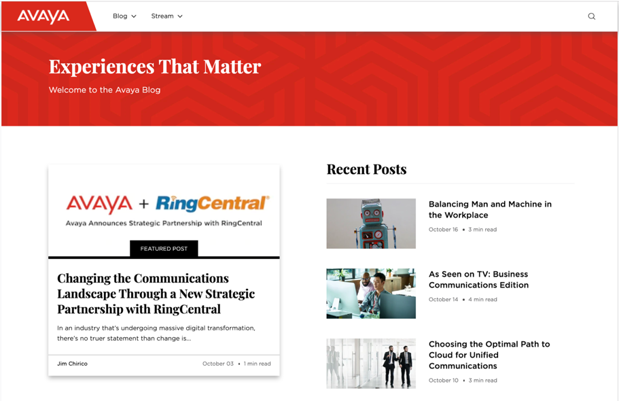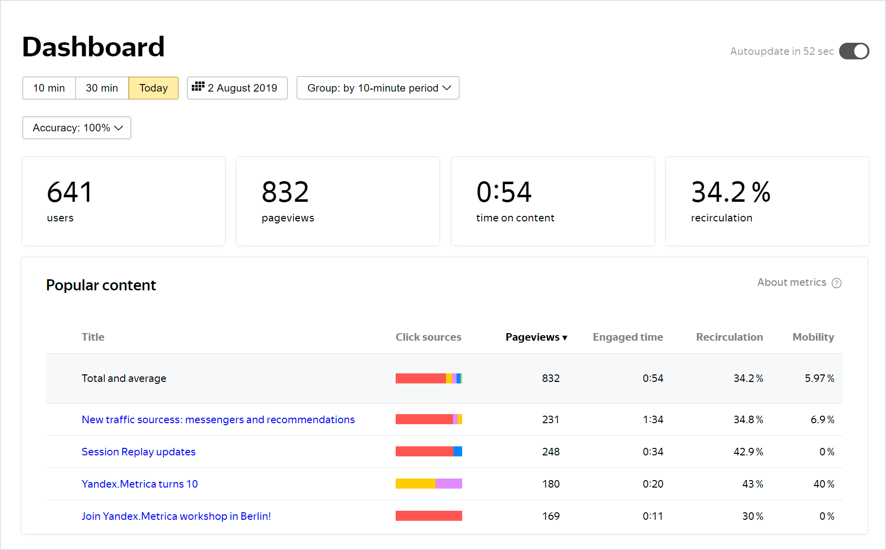Content is King – but can you be his knight in shining armour?
How properly tuned web analytics helps you to get the most out of a corporate blog
In this article we will try to understand why so many companies of all sizes and shapes pay more and more attention to corporate blogs, and how to get the most out of it through content analytics.
In today’s world, information is key. However, our attention spans are growing shorter and shorter. Psychologists say people online focus on one thing for an average of eight seconds – one second less than a goldfish. That’s why so many companies, from well-established multinational corporations to unicorns and SMEs, are all trialing different ways of staying on current and potential customers’ radar.
Some launch viral campaigns, go hard on social or raise their share of voice in the huge mass of information that surrounds us day in day out. Others choose to become their own publishers by creating and promoting corporate blogs, which allows you to interact with the target audience on your own platform, when and how you find it appropriate.
Hewlett-Packard, General Electric, Avaya, Facebook or Playstation are the perfect example. They use their own platforms and community blogs to:
- inform consumers about new products or features quickly and properly,
- establish themselves as industry experts sharing knowledge and best practices,
- and most importantly – increase their loyal customer base and revenues.

Marketers who prioritize blogging efforts are 13x more likely to see positive ROI. Today on WordPress alone, 70 million blog posts are published every month. In the coming years, this trend of “becoming your own media” is set to grow stronger and stronger. So, if you don’t have a corporate blog yet, hurry up, or you’ll get outplayed!
It might sound like a tall order to create your own corporate media outlet. However, it’s not as hard as you might think. In fact, there is a large amount of best practices and cases to look at and tips to make use of. I personally recommend 10 quick tips from Liz Dennison, content marketing strategist and HuffPost contributor.
Let me briefly summarize those for you:
- Know your audience (who, what, why)
- Repurpose the content you’ve already created
- Leverage subject-matter experts
- Plan your posts with an editorial calendar
- Keep SEO in mind
- Write succinct and actionable copy
- Include calls-to-action
- Feature guest bloggers
- Include images
- And last but not least: analyze what’s working – and what’s not
As I’ve been dealing with web analytics for nine years, let me give you a few more tips on this last point.
Index
Why analyze your content performance?
It’s not acceptable anymore to just produce any content – you want your customers to be engaged, visit your media regularly, subscribe to newsletters and notifications, etc. The content itself needs to be engaging, informative, and convenient if you want it to stand a chance of attracting new customers and safeguarding the loyalty of current ones, not to mention drive sales.
What’s important to remember is that creating your own corporate media is a long-term play, so don’t expect overnight results. Before your content starts to get you more conversions, you need to figure out what your audience wants to know and which channels work best.
Monitoring and measuring how readers interact with your content becomes crucial, and what is even more crucial is that you need to base on data, not on intuition.
Here are just some of the questions content analytics can help you with:
- Where do your readers come from? Search results or social media? Should you invest more in SMM or SEO?
- Which formats are the most popular? Short posts, infographics, long reads, or videos?
- Which articles do people read all the way to the end, and which ones do they close after the first paragraph?
- Which articles help boost engagement as readers click through to other materials?
- Which headlines are most effective?
Leveraging on this data, you can optimize your topics, formats, and distribution to empower your content to become the real king of your marketing strategy. But to ensure this happens, you need to be equipped with the right tools.

So how can you help your content rule the world?
Strange as it may sound, only four out of ten US companies currently have content analytics in place, according to the 2019 Content Management & Strategy Survey from Content Marketing Institute. I am deeply convinced that if almost 60% of the remaining companies still do not track their content performance, it’s just because they have not found the right tool yet.
There are multiple paid solutions available on the market, such as ChartBeat, LinkPulse and Parse.ly, among many others. However, not everyone is ready to invest $500 or more every month, without knowing how exactly the tool works and whether it’s right for your business needs. Some solutions mentioned above suggest free subscriptions, but those come with strict limitations.
Another option is to start measuring your content performance with a free tool. In July 2019, we at Yandex.Metrica launched our brand-new content reports feature, which allows you to immediately understand what’s hot on your blog right now, where do your readers come from and how they interact with your content, which authors, topics, and formats perform best, etc.
Each of the above questions is answered with a separate thorough report – and it doesn’t stop there. If you want to dig deeper, you can also get information on how your content influences sales and revenues through calls-to-action. You can track almost any event on your site with Yandex.Metrica, and combine that statistics with data on your content performance to see which articles drive sales straightaway or spur your audience to action. For example, you can see which content makes people subscribe to your blog, download your product catalog, see the contacts page — it can be virtually any kind of interaction with your site.
And yes, all functionality is 100% free for any company of any size.

Six features for successful content
We’ve taken a thorough look at analytical data, and here is what web analytics has revealed to be important for a popular piece of content:
- Titles with 6-13 words attract the highest and most consistent amount of traffic.
- Posts of 27000 characters are read to the end a lot more often than longer ones.
- Video content is 50 times more likely to drive organic search results than plain text
- People on average read 2.6 articles per week, and 1.75 per visit. While the amount varies by the media type – news sites will get more reads than other outlets – no reader will spend hours per day on a website. However, if your figures are close to those above, you’re doing well.
- Recommendation systems give traffic to your content for approximately a month after publication, so don’t worry if you’re not getting high reach out of the gate. Give it time.
- People are more likely to read your content to the end while on a smartphone: the share of full reads for smartphones is about 33%, while for desktop it’s slightly lower (29%).
Use this data while planning your editorial calendar and working on your posts, and then measure the ‘before-after’ conversion rates to see if you are moving in the right direction.
To sum it up: it’s not about magic – it’s about working hard and staying on the track
I’ll be frank with you: creating a good corporate blog is not that easy, keeping it live is even harder. While 77% of all businesses have a corporate blog, 85 percent of those blogs have five or fewer posts. To make it to the remaining 15 percent, you need to be highly motivated, creative, disciplined – and ideally equipped with a good team of experts and copywriters that are there for you to create content that pops.
The important thing to remember is: no analytics system will magically fix content-related problems for you. What it can do is equip you with the right information and send you down the right path. Ready – steady – go!

Comments are closed.